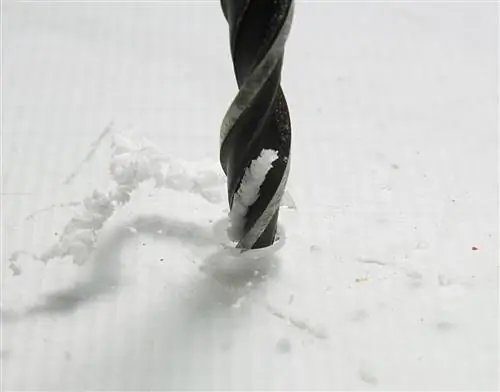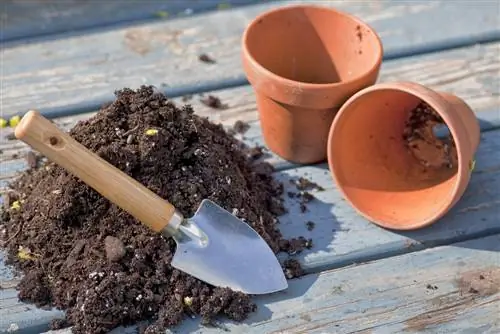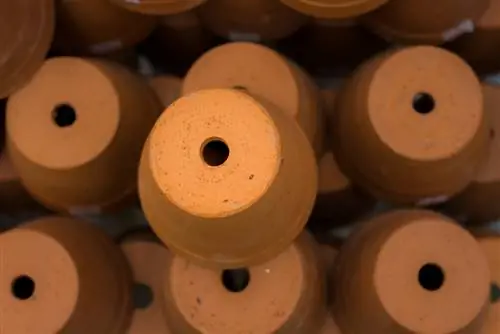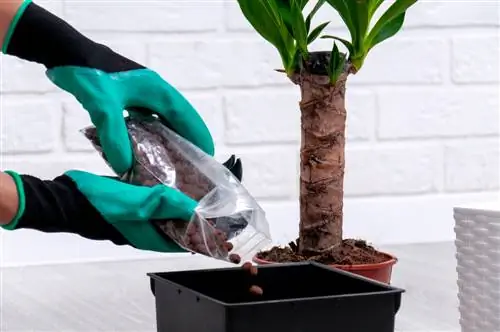- Author admin [email protected].
- Public 2023-12-16 16:46.
- Last modified 2025-01-23 11:22.
A drainage hole in the flower pot is required for the well-being of the plants. There are usually drainage holes in the pots, but there are also some that have no drainage so that they can be placed in different locations. Such pots definitely need drainage.

How to create drainage in a flower pot without a hole?
To create drainage in a flower pot without a hole, you should add a layer of expanded clay (€11.00 on Amazon), gravel or shards of pottery to the bottom of the pot and cover it with a fleece. This prevents waterlogging and enables optimal water supply to the plant.
Drain hole and drainage in the flower pot
The drainage hole in the flower pot is necessary so that excess irrigation or rainwater can drain away. If the water accumulates in the pot, waterlogging occurs, which leads to root rot. Flower pots and containers in the garden should always have a drain, as they have to cope with heavy rainfall from time to time.
Drainages are useful in flower pots and containers, as too much water can drain out, but a certain amount of residual moisture remains in the pot and the plant can use it on dry days. Drainage usually consists of expanded clay (€11.00 on Amazon), gravel or pottery shards, which is covered with a piece of fleece so that it cannot mix with potting soil.
Pots and planters without holes
For houseplants, you can do without a drainage hole in the pot if there is a generous drainage layer. If watered moderately, the drainage can absorb the water well and slowly release it to the plant. If you want to be on the safe side, you can always see how much water is left in the pot with an integrated irrigation system.
Create water reservoir
A pot with a water reservoir can easily be made from a plant pot without a hole.
- Draw a guide line around 5 cm from the bottom of the pot with a pencil (the height of the line varies depending on the size of the pot).
- Place the pot on its side.
- Have a second person hold on to prevent the pot from rolling away.
- Clamp a thin drill bit into the drill.
- Carefully drill several holes on the drawn line.
- Then drill with a stronger drill.
Now fill a drainage layer into the pot, the upper limit is the row of holes. Now you can insert a plant and water it with enough water until it comes out of the holes. You now have a water reservoir from which the plant can supply itself with water for several days.






